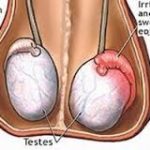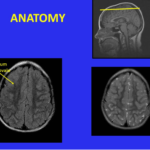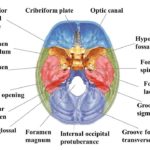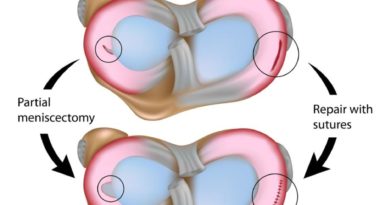Shin Splints
What Is Shin Splints?
Shin splints refer to pain occurring along the tibia, the inner edge part of the shinbone. In people who exercise, shin splints are a common problem. Shin splints will typically develop following a physical activity and athletes, especially runners are the most affected, though any person involved in vigorous sports activities can develop the problem. People starting out on their fitness program may also face this problem.
In medical terms, shin splints may be referred to as medial tibial stress syndrome. Ideally, it is inflammation of the tendons, muscles, and bone tissues surrounding the tibia. The pain occurs in the areas where muscles are attaching to the bone. Although shin splints is a prevalent condition, the mechanism in which it occurs is not clearly understood.
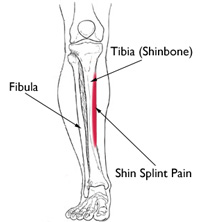
Causes
The main culprit for shin splints is overworking the leg by repetitive activity. It may occur when a person takes a sudden shift or change in physical activity. The change may involve the frequency of exercising- for instance, if you increase the days you exercise in a particular period, say, and a week.
The change may also involve the intensity and duration of exercising, for example, taking longer running distances or running on hills.
There are other things that could result in shin splints and they include wearing worn out footwear when running or exercising with improper shoes. You may also develop the problem if you have flat feet or you have abnormally rigid arches.
The exact anatomical and physiological origins of the condition may not clearly be understood, but there are various issues associated with it including repetitive activities. In theory, it is believed that when there is stress involving the shinbone and the connective tissues attaching the muscle to the bone, there may occur pain and inflammation.
Many medical professionals believe that tibial injuries may cause shin splints.
Other than repetitive activities, other possible causes are a disease of the tendon commonly referred to as tendinopathy and bone growth or regeneration, also referred to as periosteal. Whenever there is a muscle dysfunction among tibialis posterior, tibialis anterior and soleus, it is possible that shin splints will develop.
Tibialis posterior are the muscles inside of the ankle and tibialis anterior are the muscles that run along the foot to the big toe while soleus muscles consist of the lower calf. So, if one or more of these muscles are not functioning properly, it may result in shin splints.
Can Overpronation cause
Yes, ankle overpronation is considered the greatest cause of this condition. Overpronation manifests when the ankle moves downward toward the center of your body. What happens is that the change in position puts a big part of arch in persistent contact with the ground. This means that there is more weight exerted on the medial or the inside of the foot than the lateral or outside edge of your foot.
Such abnormal movements may make the muscles to become tired quickly, something that limits their ability to act as shock absorbers.
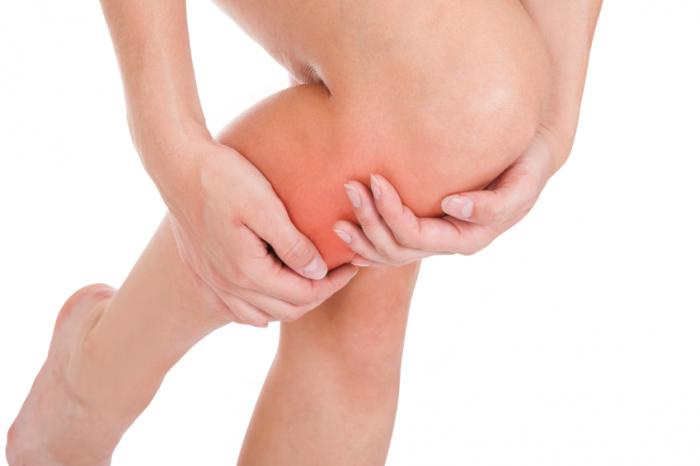
Risk Factors
While people involved in vigorous exercises may face this health problem, there are people that tend to be at a higher risk than others. Runners, for example, are considered to be the most vulnerable group to shin splints.
Military recruits and dancers are other groups of people who are at risk of developing pain in tibia. Aerobic dancers are another group of people affected by shin splints.
An important aspect to note here is that although this condition is common among high impact sportspersons, even walkers can experience it, especially if they increase the distance and speed of exercising abruptly.
Symptoms
Pain occurring along the area bordering the tibia is the most common symptom. A person may also experience mild swelling within the same area.
Other signs and symptoms of shin splints are a sharp and razor-like pain or dull and throbbing pain. The pain may also occur after exercise or during exercise or both, and it may worsen if you touch the sore area.
There is a likelihood of having potential swelling within the lower legs. On the onset of the pain, it will tend to cease when you stop exercising or indulging in high impact activity, but when the condition gets worse, you may find that the pain is constant.
Diagnosis
A physician will discuss the medical history of a patient and carry out physical examination. To rule out the possibility of other issues with similar symptoms, X-rays may be taken.
Some other medical conditions may show symptoms similar to those of shin splints and they include reduced blood circulation in the lower part of the leg- something common among smokers. People with muscle hernia or a leg muscle that is bulging out of place may also show symptoms resembling those of shin splints.
A person with swollen muscles that are compressing the nerve, a condition known as compartment syndrome may have similar symptoms. People with nerve problems occurring within the lower back, a condition known as radiculopathy, may also experience symptoms like those of shin splints.
Tendinitis or inflamed tendons, stress fractures or small cracks occurring in the tibia and popliteal artery entrapment syndrome are other conditions that show symptoms similar to shin splints.
Treatment
The good thing about shin splints is that you can treat the condition with some simple home remedies. If you are diagnosed with this condition, you need to have adequate rest and recuperation. During this time, you may want to minimize impact activities like swimming and go for less vigorous activities as you allow the pain and inflammation to subside and the condition to heal.
Try to keep your legs raised, take ice packs and placed them on the painful area for about 15 minutes in every few hours until you feel that the pain has subsided. You can use pain medications like acetaminophen, ibuprofen, and naproxen sodium to help ease the pain.
If you feel that the pain has reduced, you can begin your exercise regime, but ensure that you built it up gradually so that the condition does not reoccur. In the event that the pain comes again after resuming your physical activities, it is best you stop.
Preventing
There are things you can do to ensure that shin splints do not occur and they include lessening impact by going for exercises like cross-training with walking and biking. When doing the exercises, consider doing them on soft surfaces and if you are indulging in a new activity, start slowly and gradually increase the intensity and speed.
You need to wear the correct footwear and use arch supports or orthotics, but remember these may be painful to people having flat arches. Take exercises that strengthen the muscles and tendons in the affected area.
Reference Links
- http://orthoinfo.aaos.org/topic.cfm?topic=a00407
- http://www.sportsinjuryclinic.net/sport-injuries/ankle-achilles-shin-pain/shin-splints
- http://www.mayoclinic.org/diseases-conditions/shin-splints/home/ovc-20215288
- http://www.webmd.com/fitness-exercise/shin-splints
- http://www.medicalnewstoday.com/articles/242169.php

